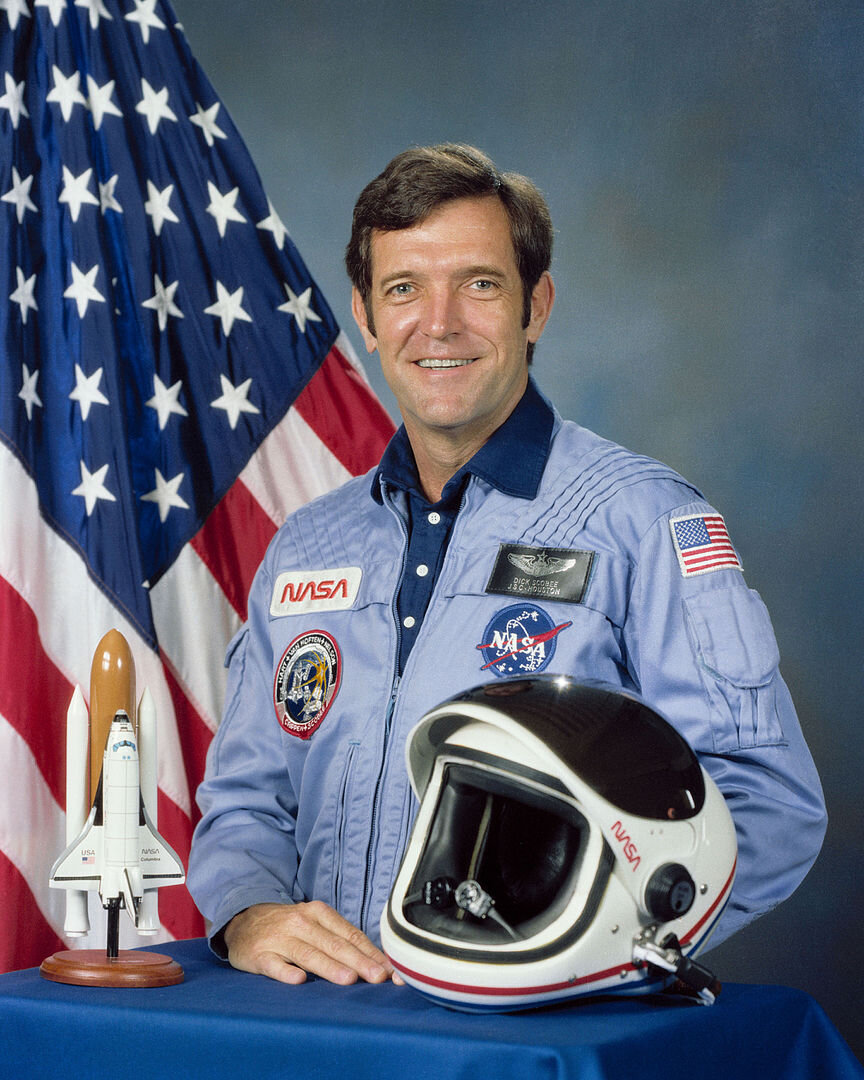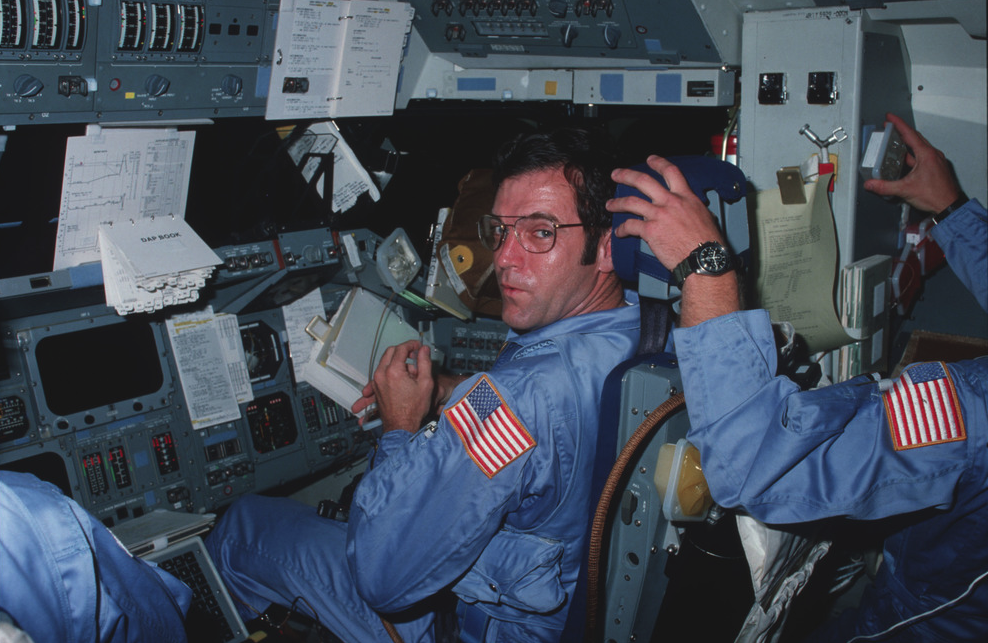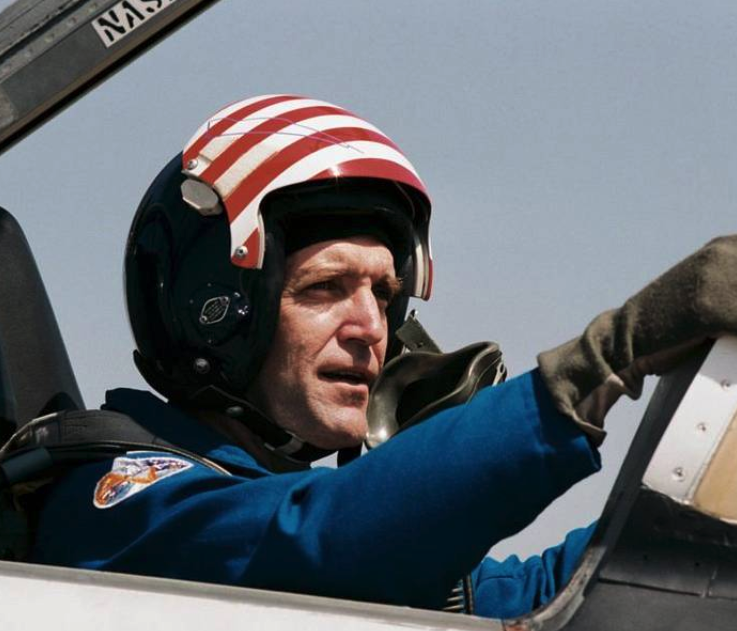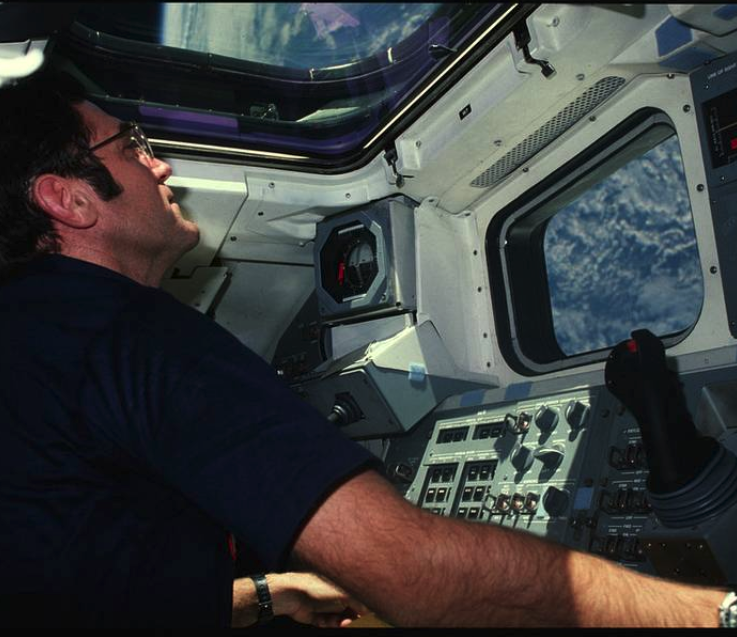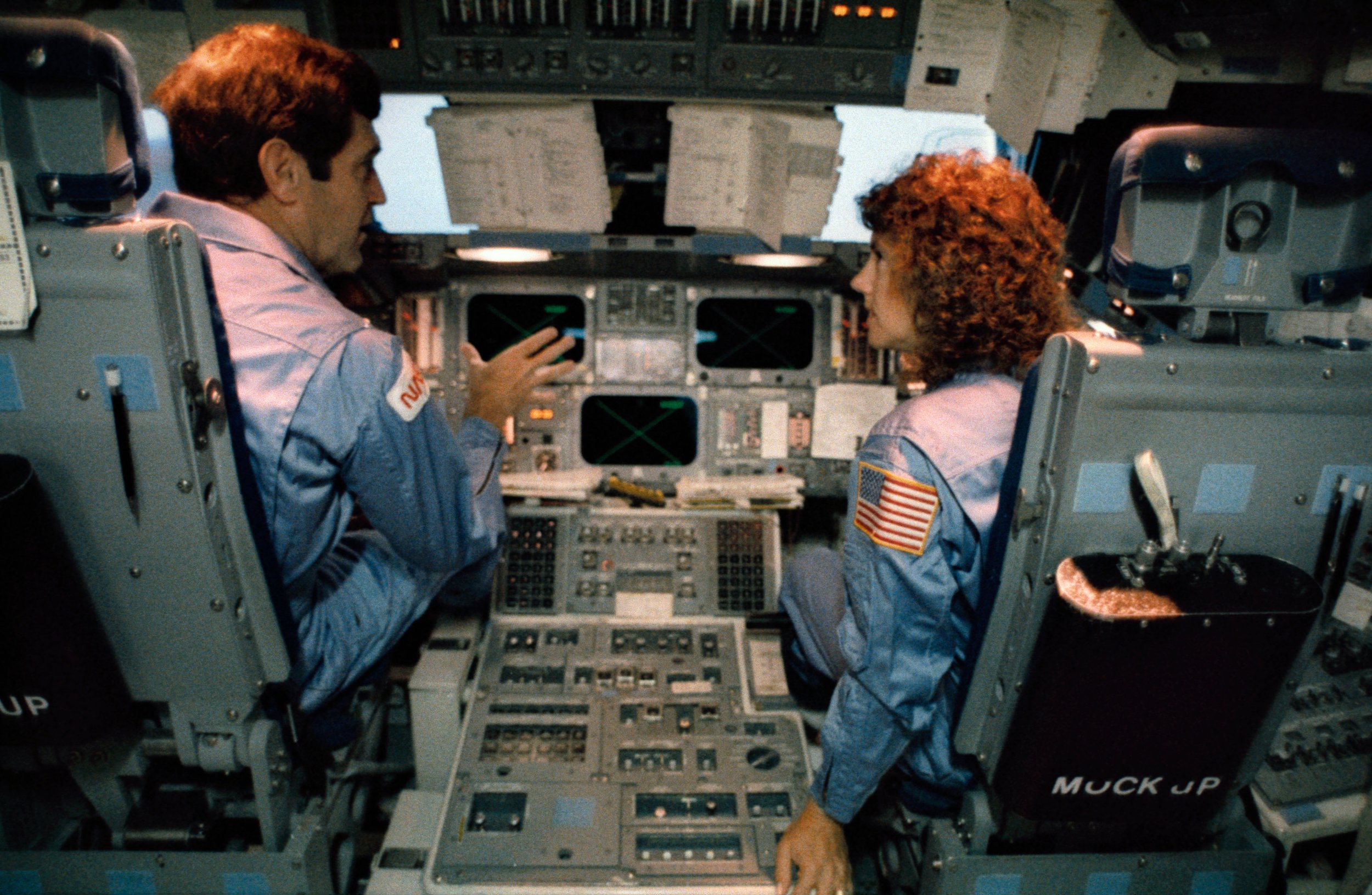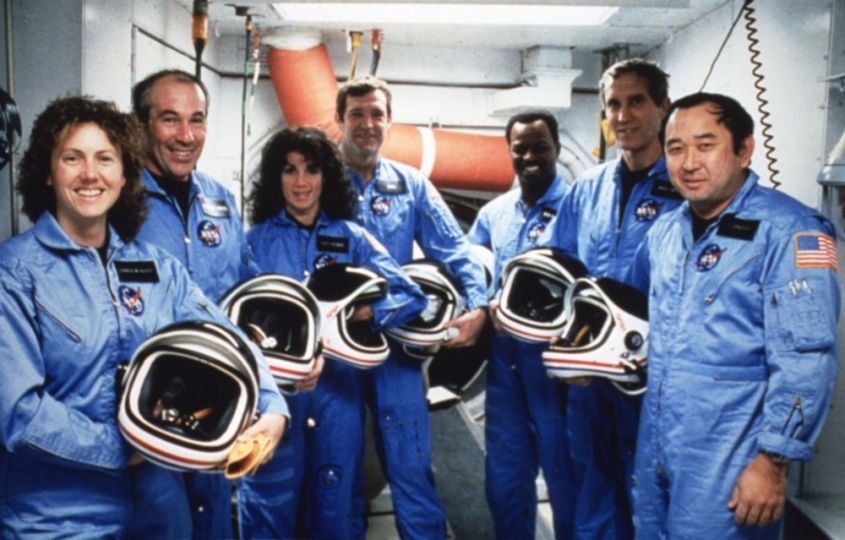Francis “Dick” Scobee
“If I can do it, anyone can.”
Early life
Scobee was born May 19, 1939, in Cle Elum, Washington, to Francis William Scobee and Edlynn (Miller) Scobee. He attended Washington Elementary School, Cascade Jr. High School, and Auburn Senior High School, from which he graduated in 1957.[2]
Air Force service
Scobee enlisted in the United States Air Force in 1957, where he served as a reciprocating engine mechanic at Kelly Air Force Base in San Antonio, Texas. While off duty, Scobee attended San Antonio College, and eventually received a Bachelor of Science degree in Aerospace Engineering from the University of Arizona in 1965. He was a member of Tau Beta Pi. In 1965, he was awarded an officer's commission. Afterward, Scobee attended flight school and earned his pilot wings in 1966, serving as a combat aviator in the Vietnam War. He was awarded the Distinguished Flying Cross, the Air Medal, and other decorations.
After his tour of duty, Scobee attended the USAF Aerospace Research Pilot School (Class 71B) at Edwards Air Force Base, 100 miles north of Los Angeles, California. Upon graduation in 1972, he became an Air Force test pilot, logging thousands of hours of flight time in dozens of aircraft, including the Boeing 747, the experimental X-24B lifting body, the F-111 Aardvark, and the gigantic C-5 Galaxy.[1]
Challenger
Scobee was assigned commander for the ill-fated STS-51-L mission, after having previously flown Challenger in STS-41-C as a pilot. The mission, designed to deploy a satellite to study the approaching Halley's Comet and to inaugurate the Teacher in Space Project, was delayed numerous times due to bad weather and technical glitches. When the mission finally did lift off the pad, a solid rocket booster O-ring seal failure destroyed the shuttle 73 seconds into the flight, killing Scobee and the other six crew members; the disaster, viewed live on national television, prompted several days of national mourning, as well as a major shakeup at NASA. Scobee died a lieutenant colonel. At T+68 into the mission, the CAPCOM Richard Covey informed the crew that they were "go at throttle up", and Scobee confirmed the call—his last recorded words were his response, "Roger, go at throttle up." The shuttle broke up at an altitude of 48,000 feet (14.6 km).[3]
After the investigation, Overmyer stated, "I not only flew with Dick Scobee, we owned a plane together, and I know Scob did everything he could to save his crew. Scob fought for any and every edge to survive. He flew that ship without wings all the way down."[4]
Family
Scobee and his wife, Virginia June Kent (now June Scobee Rodgers; born November 30, 1942), had two children together: Kathie R. Scobee Fulgham and Lieutenant General Richard W. Scobee. Scobee is buried in Arlington National Cemetery. June remarried in 1989 to retired Army LTG Don Rodgers. Richard graduated from the U.S. Air Force Academy, has flown F-16s for the USAF, and has commanded the 506th Air Expeditionary Group, 944th Fighter Wing, the 301st Fighter Wing, the 10th Air Force and U.S. Air Force Reserve Command.[5] He led the military flyover during the pregame of Super Bowl XXX, which was played on the 10th anniversary of the disaster in 1996.[6]
Awards and recognition
On July 9, 1994, the San Antonio College Planetarium was rededicated The Scobee Planetarium. In 2004, Scobee was posthumously awarded the Congressional Space Medal of Honor and was inducted into the Astronaut Hall of Fame. After the Challenger disaster, a number of schools, streets, and municipal facilities in the U.S. were renamed in his honor. North Auburn Elementary School in Auburn, WA was renamed Dick Scobee Elementary, and Auburn Municipal Airport became Dick Scobee Field.[7] Dick Scobee Memorial Airfield is a radio-controlled and model aircraft facility located at George Bush Park in western Harris County, Texas.
Scobee Road in Myrtle Beach, South Carolina,[8] along with Ronald McNair Boulevard and Christa McAuliffe Street, commemorate Scobee and his fellow Challenger crew members. In Houston, Texas' George Bush Park, there is a R/C (Remote Controlled) Flying Field named in his honor.[9] Scobee was portrayed by Barry Bostwick in the 1990 TV film Challenger. He also made an appearance in the 1985 IMAX documentary The Dream is Alive, shot during the STS-41C mission.[10] In April 1986, Dick Scobee Elementary School was dedicated in a ceremony attended by his spouse, June.[11]
About Space Shuttle Challenger
Space Shuttle Challenger (OV-099) was a Space Shuttle orbiter manufactured by Rockwell International and operated by NASA. Named after the commanding ship of a nineteenth-century scientific expedition that traveled the world, Challenger was the second Space Shuttle orbiter to fly into space after Columbia, and launched on its maiden flight in April 1983. It was destroyed in January 1986 soon after launch in an accident that killed all seven crewmembers aboard. Initially manufactured as a test article not intended for spaceflight, it was utilized for ground testing of the Space Shuttle orbiter's structural design. However, after NASA found that their original plan to upgrade Enterprise for spaceflight would be more expensive than upgrading Challenger, the orbiter was pressed into operational service in the Space Shuttle program. Lessons learned from the first orbital flights of Columbia led to Challenger's design possessing fewer thermal protection system tiles and a lighter fuselage and wings. This led to it being 1,000 kilograms (2,200 pounds) lighter than Columbia, though still 2,600 kilograms (5,700 pounds) heavier than Discovery.
During its three years of operation, Challenger was flown on ten missions in the Space Shuttle program, spending over 62 days in space and completing almost 1,000 orbits around Earth. Following its maiden flight, Challenger supplanted Columbia as the leader of the Space Shuttle fleet, being the most-flown orbiter during all three years of its operation while Columbia itself was seldom used during the same time frame. Challenger was used for numerous civilian satellite launches, such as the first tracking and data relay satellite, the Palapa B communications satellites, the Long Duration Exposure Facility, and the Earth Radiation Budget Satellite. It was also used as a test bed for the Manned Maneuvering Unit (MMU) and served as the platform to repair the malfunctioning SolarMax telescope. In addition, three consecutive Spacelab missions were conducted with the orbiter in 1985, one of which being the first German crewed spaceflight mission. Passengers carried into orbit by Challenger include the first American female astronaut, the first American female spacewalker, the first African-American astronaut, and the first Canadian astronaut.

